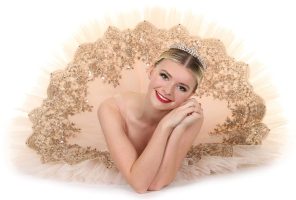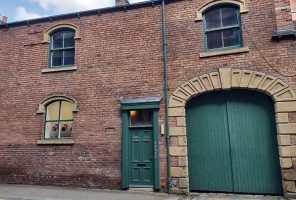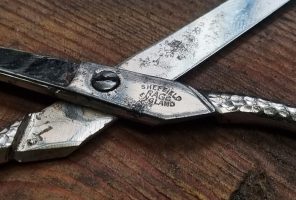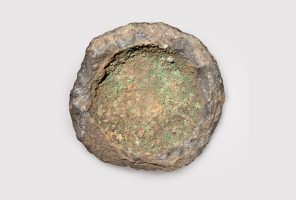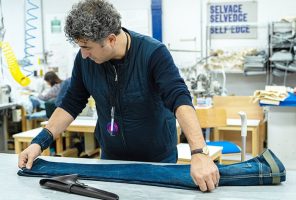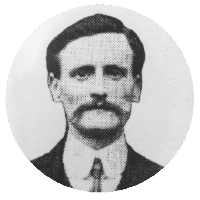Ruby Fox is an installation artist based at The Drawing Room, an art centre that backs onto the Ernest Wright workshop in Sheffield. There are three main strands to Fox’s work: set design, art design for festivals, and window displays for retailers, notably including an eco-friendly fashion and lifestyle chain from London.
Fox honed her skills while volunteering with Punchdrunk, a theatre company known for its immersive stagecraft.
“I’d done fine art at uni, where I tried all sorts of things but couldn’t decide what to focus on,” says Fox.
“The theatre company had taken over an old antiques market, over three floors, and built this labyrinthine set. The set designer would give me a mood, and some props, and say dress that. It could be an undersea world, or a creepy laboratory, or whatever.
“At that point I was like, this is how I can connect that with that. This is how I could connect making art with the real world.”




GIVING ANIMALS PERSONALITY IS A CHALLENGE
Fox’s art is alive with texture and character. In her Magical Forest Window shop window display, paper with torn edges becomes the peeling bark of a birch tree. Slivers of paper with clean, curved edges join with rumpled cardboard to form fungi sprouting from the tree’s trunk. The window is home to a paper owl, a paper hare and a paper fox.
“Giving animals personality is a challenge,” says Fox, the artist.
“There’s this sweet spot between it looking cutesy and twee, or looking creepy. It’s all in the eyes. At first, the owl just looked like it wanted to murder you. It took me ages to get it right.”
Making the forest window was a dream gig for Fox.
“It was so creative,” she says. “They just gave me the brief, and I designed it, and the whole thing is me. I now feel like I’ve got photos of this thing where it’s just like, “Yes, I made this!””
I WANT TO CREATE SOMETHING MAGICAL
For Fox, designing an installation tends to start with experimentation.
“A lot of the markings I make are quite random,” she says. “It’s often a case of getting lots of sheets of paper, washing loads of ink over them, splattering them, creating loads of different textures and ripping the sheets, then picking out the bits that are good.”
While all sorts of materials find their way into Fox’s work, card tends to be the basis.
“I choose materials based on what I can get my hands on for free, or just use things I’ve got lying around,” she says. “There’s a box factory nearby, where I go and get these huge sheets of cardboard. You can make anything with it.”
Fox shows us a host of other creations: a moon made of spray-painted Perspex, steps made of OSB wood and card, an installation made almost entirely of old doll’s parts. The aim is always to turn ordinary things into an otherworldly experience.
“I want to create something magical; something out-of-the-ordinary, that makes your day more interesting in some way,” says Fox.


AN INSTALLATION IS LIKE A COMPOSITION VIEWED FROM LOADS OF DIFFERENT ANGLES
According to Fox, installation art always boils down to designing for space.
“It’s the same thing no matter who I’m making the installation for, but the aesthetic is different.”
Attention to detail is crucial. “There’s lots to think about: how it looks from all different angles, how it feels,” says Fox. “With everything that I make, there are so many minor adjustments. I’m quite a perfectionist in that sense.
“An installation is like a composition, but it’s viewed from loads of different angles, so you’ve got to look at it from a 3D perspective. There’s a lot of attention to detail, where people might not see how much work’s gone into it,” she says.
Fox focuses on other people’s experience of her art, rather than her own experience of making it. “I try to put myself in their shoes,” she says. “I’ve definitely got the audience in mind – but then there’s my own creative self-indulgence as well.”
SCISSORS ARE ONE OF MY MAIN TOOLS
Fox uses Ernest Wright’s 10” paperhanger scissors to cut the card and paper that makes up much of her installations.
“Scissors are one of my main tools, a staple, for tasks like the Magical Forest Window,” says Fox.
“The paperhangers are much better than the rougher scissors I was using previously, which were the best scissors I’d had till now. These are a much higher grade.”
Clean cuts made by scissors create an effective contrast with the rough, hand-torn edges Fox uses to create pieces like the animals in Magical Forest Window. “It gives a totally different feel,” says Fox.



